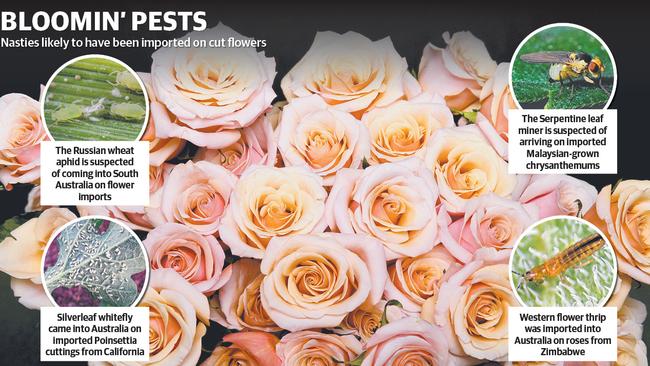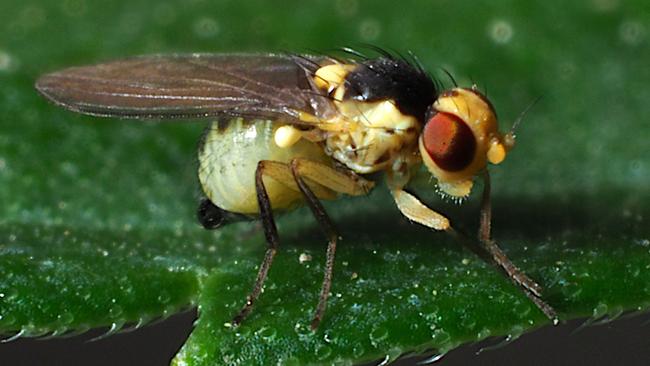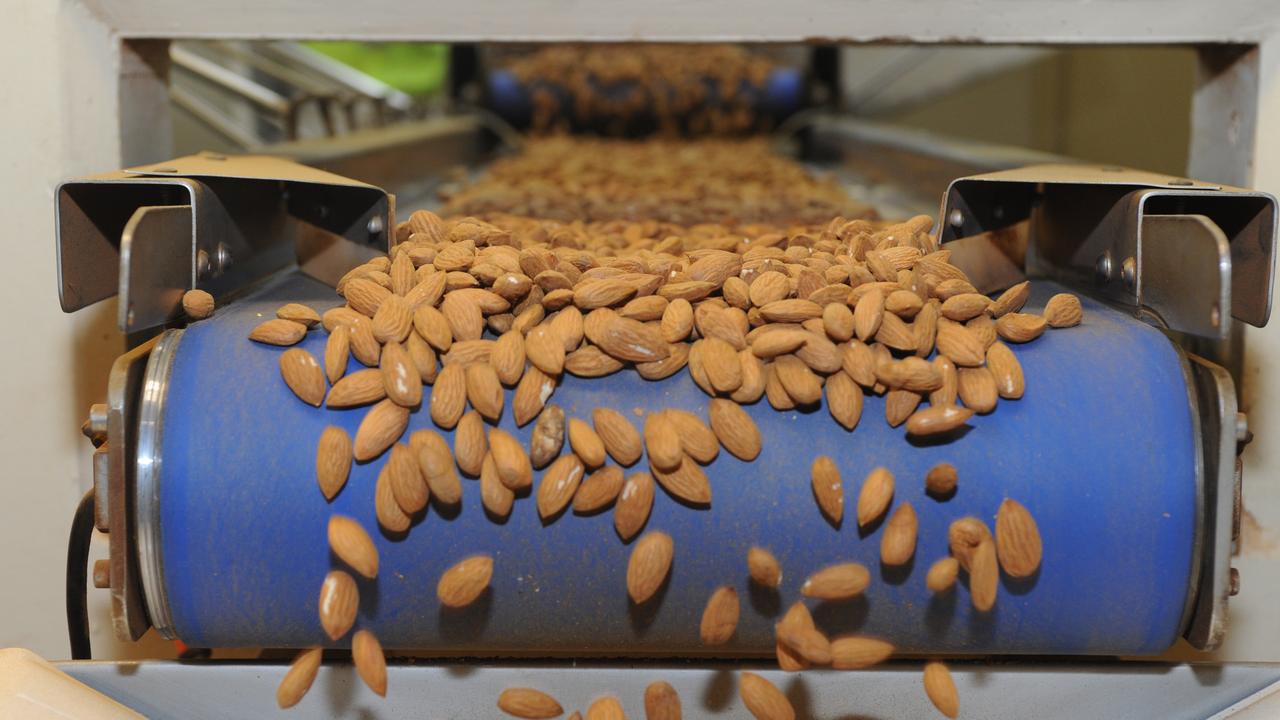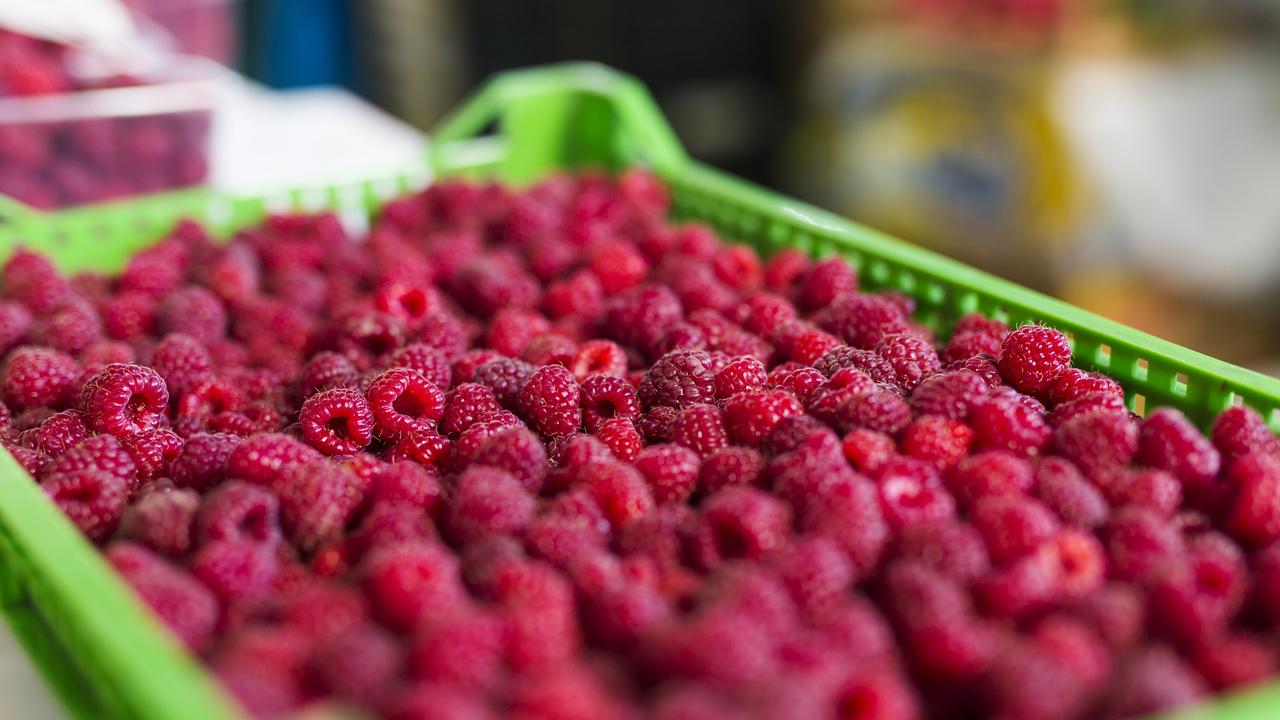Exotic pests ride into Australia on cut flower imports
Cut flower imports flood Australia with 250 million blooms each year containing some of the most damaging pests on the planet. And the process that has allowed these pests onto our shores will shock you.

CUT flower imports are eroding the foundations of Australia’s $30 billion grain, horticulture and wine industries, flooding the nation with 250 million blooms each year containing some of the most damaging pests on the planet.
Federal Department of Agriculture data has revealed 15,928 incidents of exotic pests on imported cut flowers in the 22 months to December 31 last year, with Kenya, Columbia and Ecuador the worst offenders.
Just last month the exotic serpentine leaf miner, which burrows its way through crops ranging from barley, rice and wheat to potatoes, cucumbers and lupins, was detected in western Sydney, where several flower importers are located.
Ironically the Federal Department of Agriculture issued an alert prior to the outbreak on June 26 stating it had suspended less rigorous import protocols on imported Malaysian-grown chrysanthemums after repeated detections of the serpentine leaf miner, which it stated was “one of Australia’s most unwanted plant pests”.
Flower Industry Australia director Sal Russo said local growers wanted all imports fumigated on arrival in Australia and all importers licenced, with the requirement they take out liability insurance to cover the cost of pest incursions.
But rather than fumigating all cut flower imports upon arrival in Australia, the department has simply demanded Malaysia and exporters from nations with widespread corruption – Columbia, Ecuador and Kenya – do their own fumigation and provide pest-freedom certification prior to export.
The failure to do more has stunned Australia’s peak farming lobby groups.

When asked why all cut flower imports were not fumigated a departmental spokesman said “import conditions that came into effect in March 2018 require exporting countries to manage biosecurity risks before cut flowers are shipped to Australia”.
“This provides a more robust risk management approach than reliance on a single on-shore risk management measure.”
“When cut flowers arrive at the Australia border, they are inspected for live pests and only those that are free from biosecurity risks are released from biosecurity control.”
Apart from the serpentine leaf miner, other exotic pest outbreaks linked to cut-flower imports, include the:
WESTERN flower thrip imported on roses from Zimbabwe.
SILVERLEAF whitefly infestations that entered Australia on cuttings of Poinsettia from California.
GALL midge Contarinia jongi, which is native to South America.
RUSSIAN Wheat Aphid, linked to South Australian flower imports.
The Weekly Times asked Agriculture Minister David Littleproud why he had not made headway on curbing more exotic pests invading Australia on cut flowers.
“I totally reject the premise of the question as the department inspects 100 per cent of imported cut flowers into Australia,” Mr Littleproud said.
“Trade is a two-way street and it would be simplistic to think we can get market access into other countries without offering it in return which is why we manage the risks based on science not emotion.”
However, under current rules while 100 per cent of flower consignments are inspected, less than 20 per cent of blooms can be physically examined.
MORE


